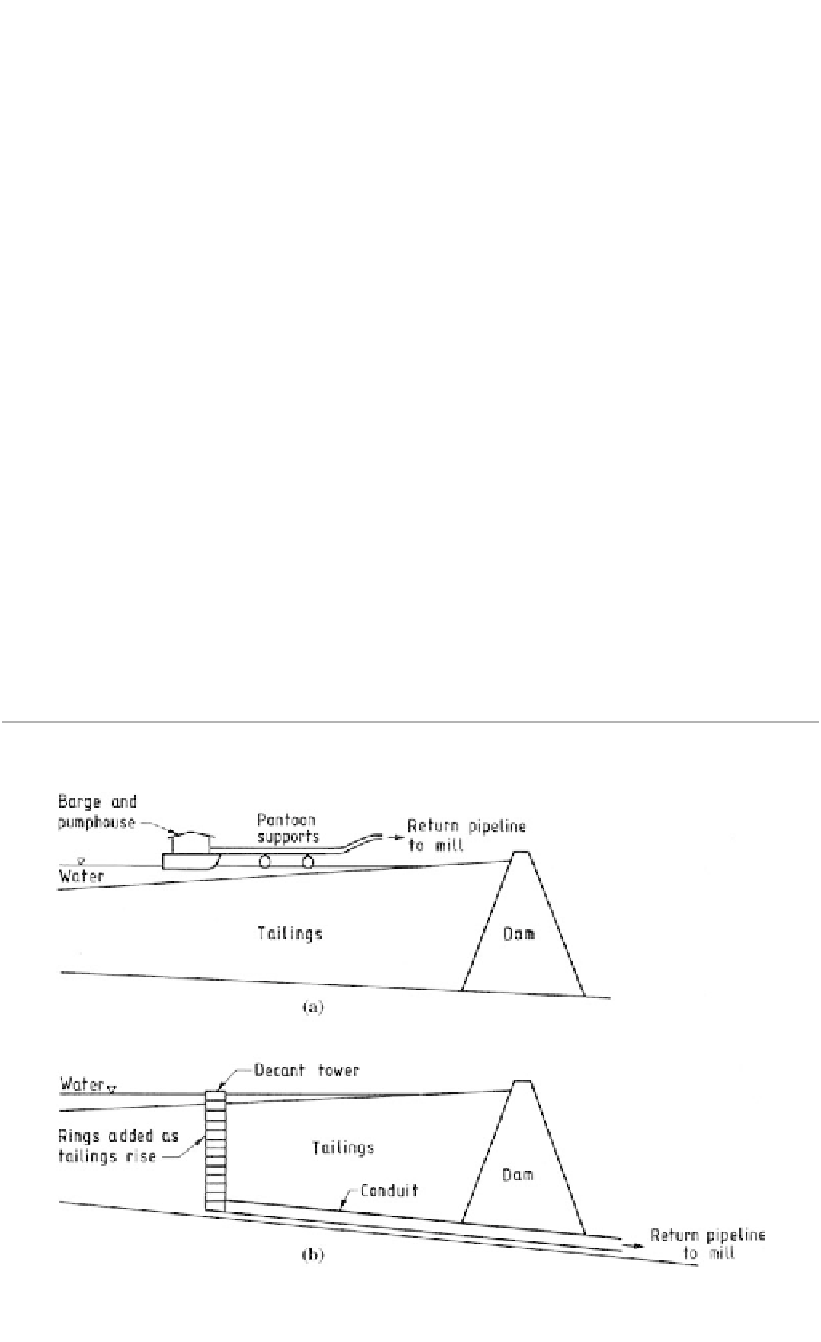Environmental Engineering Reference
In-Depth Information
19.3.4
Water recovery
Water is removed from the tailings storage as it “bleeds” from the beached tailings, or as
tailings settle and consolidate if deposited subaqueously.
This is usually achieved by a pump mounted on a floating barge or a decant tower, as
shown in Figure 19.10.
Table 19.6.
Subaerial disposal advantages and disadvantages (Knight and Haile, 1983; Lighthall, 1987;
from Ritcey, 1989).
Advantages:
(a) Higher unit weights are achieved in the tailings mass, resulting in better utilization of the storage
facility;
(b) The drained nature of the tailings and removal of surface ponding adjacent to embankments allows
construction by upstream methods;
(c) The low permeability, laminated structure of the tailings deposit reduces seepage;
(d) At decommissioning, the tailings are fully drained and consolidated, allowing immediate
construction of a surface seal and cover and elimination of any long term seepage;
(e) The drained nature of the tailings increases resistance to liquefaction;
(f ) There is a low hydraulic head on the liners; therefore a wide choice of liners is possible;
(g) Capping and covering should be facilitated.
Disadvantages:
(a) Dusting may occur unless wetted;
(b) Method may not be suitable during extremely cold periods. Therefore the disposal area is divided into
two, for alternative summer-winter deposition. Winter deposition is somewhat conventional
(subaqueous);
(c) Possibly higher initial cost to construct compared to other methods;
(d) Requires a separate water storage reservoir to be constructed for water and runoff water recycling
or discharge.
Figure 19.10.
Water recovery methods.

